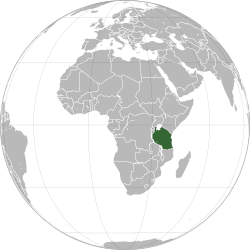A telephone numbering plan is a type of numbering scheme used in telecommunication to assign telephone numbers to subscriber telephones or other telephony endpoints. Telephone numbers are the addresses of participants in a telephone network, reachable by a system of destination code routing. Telephone numbering plans are defined in each of the administrative regions of the public switched telephone network (PSTN) and in private telephone networks.

In the United Kingdom, telephone numbers are administered by the Office of Communications (Ofcom). For this purpose, Ofcom established a telephone numbering plan, known as the National Telephone Numbering Plan, which is the system for assigning telephone numbers to subscriber stations.

Numbers on the Irish telephone numbering plan are regulated and assigned to operators by ComReg.

Telephone numbers in Singapore, also known as the National Numbering Plan, are regulated by the Info-communications Media Development Authority (IMDA). Due to the small geographical size of Singapore, there are no area or trunk codes; all numbers belong to one numbering area, and thus come in the same 8-digit format. Numbers are categorised based on the first digit, thus providing ten possible categories, of which six are currently in use and the remaining four reserved for future usage.
Widespread UK telephone code misconceptions, in particular brought on by the Big Number Change in 2000, have been reported by regulator Ofcom since publication of a report it commissioned in 2004.

The dialling plan for mobile networks and new landline operators is closed; all subscriber numbers must be dialled in full. For landline numbers starting with 02, the dialling plan used to be open; the trunk digit and area code could be omitted if the caller was in the same area code as the callee. However, starting May 3, 2008, all landline numbers must be dialled in full.

Telephone numbers in Europe are managed by the national telecommunications authorities of each country. The country calling codes start primarily with 3 and 4, however, some countries that by the Copenhagen criteria are considered part of Europe have country codes from the Asia range, starting with 9.

Telephone numbers in Malaysia are regulated by the Malaysian Communications and Multimedia Commission (MCMC).

The format of telephone numbers in Australia has changed over time to allow for the expansion of the subscriber base as technology has improved.

Telephone numbers in Norway have the country code "+47" and up to the first 2 digits of the phone number will indicate its geographic area. Emergency services are 3 digits long and start with the number "1". Mobile numbers vary in length, either 8 digits or 12 digits.

Telephone numbers in Israel consist of an area code and a subscriber number. The dial plan type in Israel is closed, and "0" is the internal Trunk prefix in Israel. Israel's country calling code is +972.

The regulation of telephone numbers in Germany is the responsibility of the Federal Network Agency of the German government. The agency has a mandate to telecommunications in Germany and other infrastructure systems.

Telephone numbers in India are administered under the National Numbering Plan of 2003 by the Department of Telecommunications of the Government of India. The numbering plan was last updated in 2015. The country code "91" was assigned to India by the International Telecommunication Union in the 1960s.
The following are telephone codes in Cape Verde.
The following telephone numbers in Kenya are destination codes for international calls terminating in Kenya as well as the procedures for dialling internationally from within Kenya. Until 1999, Kenya shared its telephone numbering plan with Tanzania and Uganda, meaning that to make calls between the three countries, subscribers needed only dial the area code and number, a legacy of the East African Post and Telecommunications Corporation (EAPTC) which was dissolved in 1977. As a result of the reorganisation of Tanzania's numbering plan in that year, direct dialling was discontinued, although calls between the three countries do not require international dialling, only a special three-digit code.
National conventions for writing telephone numbers vary by country. While international standards exist in the form of recommendation E.123 by the sector ITU-T of the International Telecommunication Union (ITU), national telephone numbering plans define the format of telephone numbers assigned to telephones and similar communication endpoints.

Telephone numbers in Georgia consist of 9 digits and follow a closed numbering plan in which the initial 2 or 3 digits indicate the service or area code and the remaining 6 or 7 digits identify the subscriber.
Telephone numbers in the United Kingdom have a flexible structure that reflects their historical demands, starting from many independent companies through a nationalised near-monopoly, to a system that supports many different services, including cellular phones, which were not envisaged when the system was first built. Numbers evolved in a piecemeal fashion, with numbers initially allocated on an exchange-by-exchange basis for calls connected by manual operators. Subscriber numbers reflected demand in each area, with single digit telephone numbers in very rural areas and longer numbers in cities.













